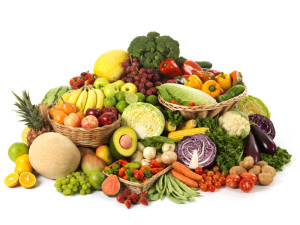Summer Potassium Control
By guest blogger DaVita Dietitian Daniel Solomon, RD, LDN

Summer time reminds us of picnics, cookouts, festivals, visits to the beach, traveling, and more.
Food is plentiful at many of these fun activities, but along with it comes a wide assortment of foods high in potassium – sweet potato, tomato, yogurt, banana, orange, nectarine, papaya, avocado, cantaloupe and honeydew, grapefruit, and mango to name a few. These foods can be tempting if you are on a low potassium diet.
Potassium is an essential mineral and electrolyte for the body. It is more popularly known for the vital role it plays in heart and digestive functions. Potassium is also important for proper functioning of all cells, tissues and organs.
One of the many jobs the kidneys hold is to balance potassium. However when kidney function is impaired this ability is limited or non-existent (as seen in dialysis patients). You then must rely on watching your food choices to avoid an increase/decrease in potassium levels in your blood.
Excessive potassium in the blood is called hyperkalemia, which can lead to irregular heart rate or heart attack; low amounts of potassium is called hypokalemia, which can cause weakness, muscle cramps, decreased energy, and an irregular heart rate.
What is a normal potassium level?
- 3.5 – 5.0 is the “safe zone”
- 5.1 – 5.5 is the “caution zone”
- 6.0 or higher is entering the “danger zone” (no affiliation with Tom Cruise or “Top Gun” the movie)
Keeping potassium levels in check while enjoying summer activities
- Be conscious of what you are eating and the consequences of high potassium.
- Eat a variety of foods in moderation to avoid filling up one food item.
- Leach or use the double boil technique on foods that are high in potassium to reduce the amount of potassium in them by 30-50%.
- Control portion size by limiting yourself to 1/2 – 3/4 cup of most food items.
- Have an accountability partner who will keep you “in-check.” (wife, friend, brother/sister)
- If you are on hemodialysis (HD), come to ALL your dialysis treatments to prevent potassium from accumulating to high levels in the blood.
How much potassium should you consume daily?
According to the 2010 Dietary Guidelines for Americans, 4,700 mg daily is the Adequate intake (AI) for adults, although most people do not consume this amount. For a hemodialysis patient, a limitation of 2000 mg per day is the standard recommendation. Peritoneal dialysis (PD) and home hemodialysis patients (HHD) have more flexibility since they dialyze more often. A frequent goal is 3000-4000 mg per day depending on blood potassium levels.
Since these limitations vary for individuals, check with your nephrologist or dietitian for your specific potassium goal.
Some possible interactions
If you are taking nonsteroidal anti-inflammatory drugs (NSAIDs) and/or ACE inhibitors, be aware that these medications can contribute to higher potassium levels. Consult your doctor or pharmacist if you have questions about these or other medications you take.
Don’t let potassium stop you from enjoying the summer; go out and have fun!
References:
K/DOQI Update Adult Guideline Maintenance Dialysis Management of Protein and Energy Intake. National Kidney Foundation. Retrieved November 20, 2024.
Your Guide to the New Food Label. National Kidney Foundation. Retrieved November 20, 2024
Potassium and Your CKD Diet. Retrieved, November 20, 2024
Additional Kidney Diet Resources
Visit DaVita.com and explore these diet and nutrition resources:
DaVita Kidney-Friendly Recipes
This article is for informational purposes only and is not a substitute for medical advice or treatment. Consult your physician and dietitian regarding your specific diagnosis, treatment, diet and health questions.

Recent Comments